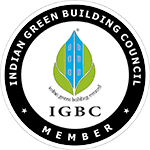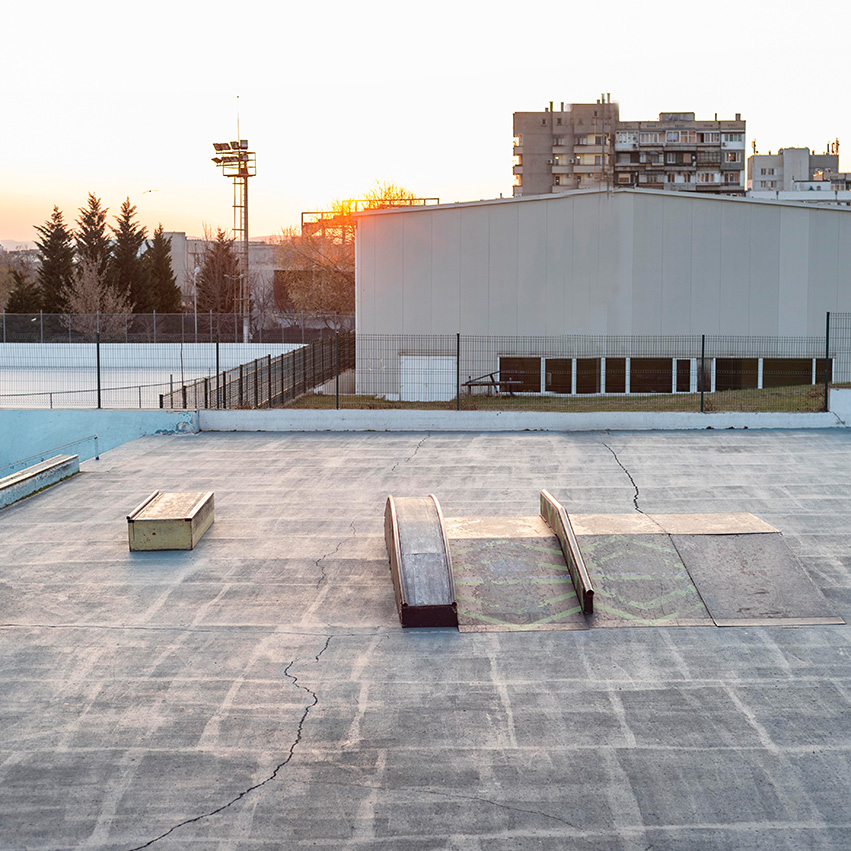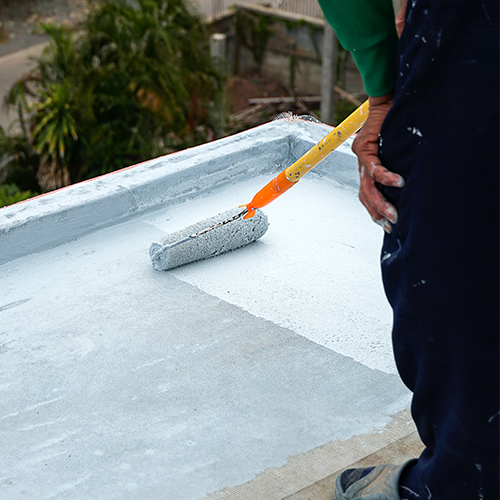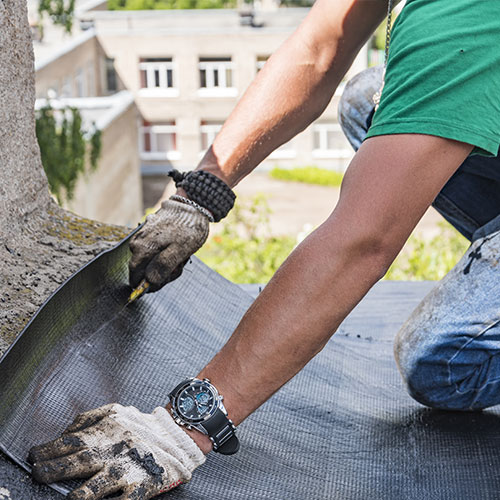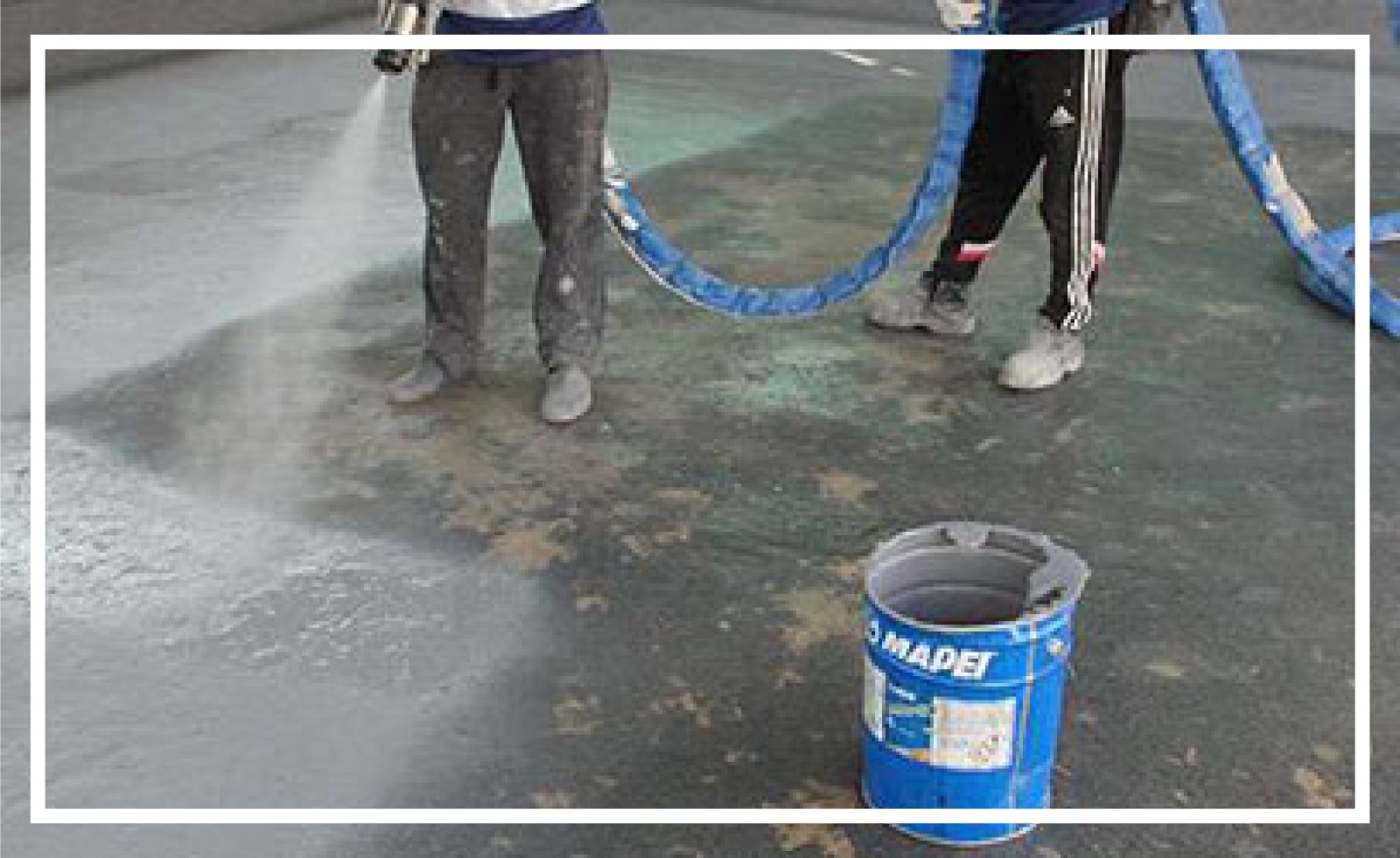 June 28, 2022
June 28, 2022
Water Proofing
It is essential to waterproof your house, ensuring that the interior areas, from the roof to the basement, remain dry. Water infiltration can lead to damages such as insect infestation, mold growth, and, in the worst cases, building failures. Waterproofing the house before construction can prevent these issues, avoiding potential harm in the future.
During the monsoon season, we all encounter the problem of water oozing from the ceiling or water getting trapped on the terrace, resulting in leaks. Such issues require a skilled professional and a basic understanding of the problems and their solutions. Read below to learn more about waterproofing and the different types available.
What is waterproofing? Waterproofing is a method that prevents water from penetrating your house. It is very important as it helps keep your house dry, reducing humidity inside and protecting items from damage caused by humidity or water exposure. It is also crucial for the integrity of the building.
Advantages of Waterproofing: Variety of Options Depending on the level of water damage or owner preference, waterproofing systems can be installed indoors or outdoors. There are also DIY (Do-it-yourself) options available if you don’t want to spend extra on hiring a contractor.
Property Value Waterproofing increases your house’s value, which is the biggest advantage. This system prevents unwanted moisture from seeping into your walls, thereby preventing mold growth, which can negatively impact our health. It also prevents damage caused by water seepage, which can compromise the structural integrity of your home. Moisture can also cause metals to rust and wood to decay. As you know, unhealthy living areas and weak foundations will affect the property value of your house. Additionally, waterproofing systems can open up the basement area, increasing the utility of your home’s square footage. This also helps in increasing the value of your house in the market.
What is waterproofing?
Waterproofing is a method which prevents water from penetrating your house. Waterproofing is very important as it helps keep your house dry. It helps reduce humidity inside the house and thereby protects things inside your house from damage caused due to humidity or water exposure. It is also important for the veracity of the building.
Advantages of Waterproofing:
Variety of Options
Depending on the level of water damage or owner preference, waterproofing systems can be installed indoors or outdoors. There are also DIY (Do it yourself) options available if you don’t want to spend extra for hiring a contractor.
Property Value
Waterproofing increases your house’s value, which is the biggest advantage. This system prevents unwanted moisture from seeping into your walls, thereby allowing mold to grow. Mold can impact our health in a negative way. It also prevents damage caused due to water seepage which can ruin the structural integrity of your home. Moisture also causes metals to rust and wood to decay. As you know unhealthy living areas and weak foundations will affect the property value of your house. Also, waterproofing systems can open up the basement area and thereby increase the utility of your home’s square footage. This also helps in increasing the value of your house in the market.
Types of Waterproofing :
Brick Bet Waterproofing:
Brick bet waterproofing helps seal cracks and prevent water leakages, while also providing an aesthetically appealing finish using china mosaic tiles. The process involves several steps:
Following are a few steps for brick bet waterproofing:
- First, remove debris and thoroughly clean the entire surface.
- Next, apply a mixture of water, chemical, and cement to the surface (referred to as “raddo”).
- Finally, place the china mosaic tiles and securely fix them in place.
Poly Acrylic Chemical Coating Waterproofing:
This type of waterproofing is considered superior and involves a specific process to ensure a strong waterproof base and protection for the structure. The process is carried out by a highly trained professional team, and it is crucial to use high-quality products for the procedure. The steps include:
- Cleaning the area that requires waterproofing.
- Sealing cracks with a poly acrylic chemical coating.
- Applying two coats of poly acrylic chemical mixed with white cement onto the surface
In this type of waterproofing you need to clean the place, then close the cracks with poly acrylic chemical coating. The final step is to put two coats of poly acrylic chemical with white cement on the surface.
Pre-Monsoon Roof Repairing:
Pre-monsoon roof repairing is essential for buildings or structures that already have leakage or damage, as well as for new structures to prevent future leakage during the rainy season. This process helps maintain the life and quality of the building, ensuring protection against damage caused by heavy rains. It is recommended to perform this method once a year.
MCON RASAYAN has a complete range of effective waterproofing systems for different substrates. Visit us at www.mconrasayan.com for all our services offered.






